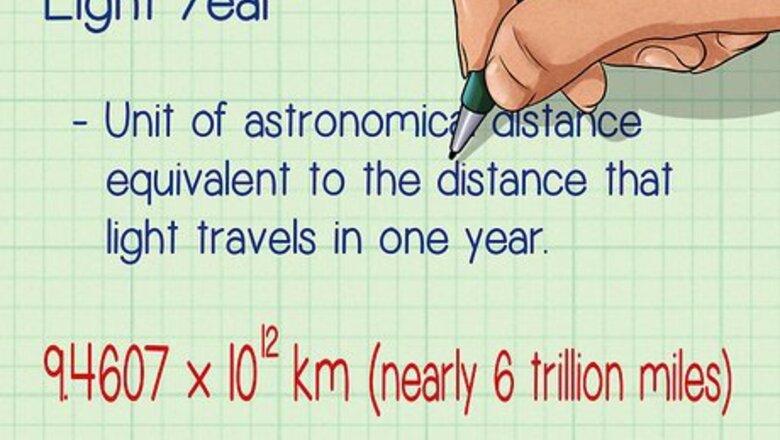
views
X
Research source
The distances between stars across the universe are very great, so astronomers use light years as a larger unit than miles or kilometers. To calculate the actual distance of a light year, you simply need to multiply the speed of light by the number of seconds in a year.
Calculating a Light Year
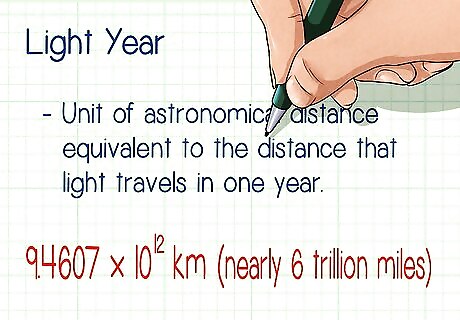
Define the light year. A light year is a measure of distance equal to how far light travels in one Earth year. Because distances across the universe are so large, astronomers use light years. Without light years, discussing the distance between two stars would require the use of large, unruly numbers. Another measure of distance you may come across when learning astronomy is the parsec. It is equal to 3.26 light years. It is another way to simplify the numbers used to calculate and discuss astronomical distances.
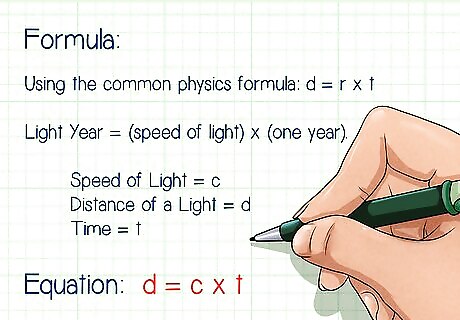
Write the formula for distance. Using the common physics formula, distance equals rate times time or d = r x t, you can calculate how long a light year is: Light Year = (speed of light) x (one year). Since speed of light is represented by the variable “c”, you can rewrite the equation as d = c x t, where d is the distance of a light year, c is the speed of light and t is time. If you want to know the distance of a light year in kilometers, you will need to find the speed of light in kilometers per second. If you want miles, you will need the speed of light in miles per second. You need to know the number of seconds in one Earth year for this calculation.
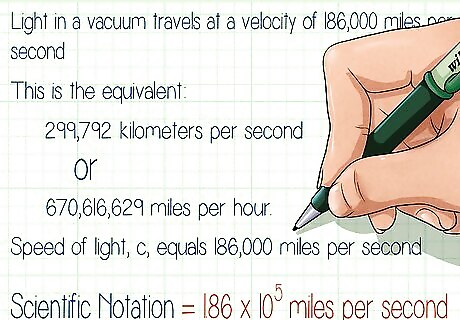
Define the speed of light. Light in a vacuum travels at a velocity of 186,000 miles per second. This is the equivalent of 299,792 kilometers per second or 670,616,629 miles per hour. Here we will use the velocity in miles-per-second. For this calculation we will use the speed of light, c, equals 186,000 miles per second. This can be rewritten in scientific notation as 1.86 x 10 miles per second.
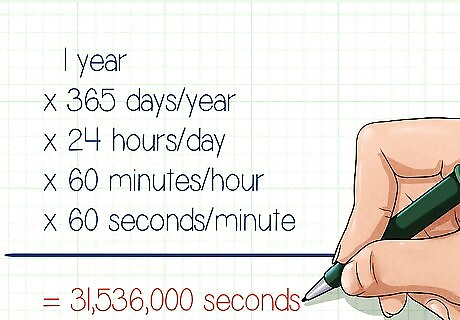
Calculate the number of seconds in a year. To find the number of seconds in a year, you will do a series of multiplications by conversions units. To convert years to seconds you will multiply the number of days in a year times the number of hours in a day, times the number of minutes in an hour, times the number of seconds in a minute. 1 year x 365 days/year x 24 hours/day x 60 minutes/hour x 60 seconds/minute = 31,536,000 seconds. Again, we can rewrite this large number using scientific notation as 3.154 x 10.
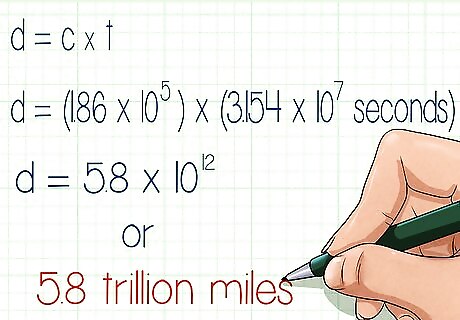
Plug variables into equation and solve. Now that you have defined the variables for speed of light and time, you can plug them into the equation d = c x t and solve for the distance of a light year. Replace c with 1.86 x 10 miles per second and time with 3.15 x 10 seconds. d = c x t d = (1.86 x 10) x (3.154 x 10 seconds) d = 5.8 x 10 or 5.8 trillion miles.
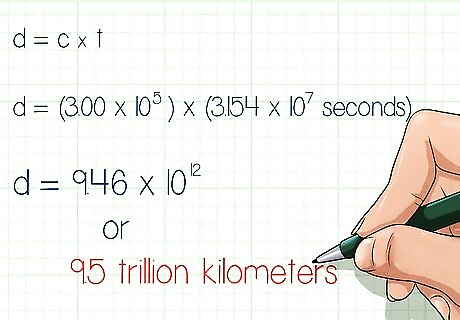
Calculate the distance in kilometers. If you wanted to calculate in kilometers, simply replace the speed of light with the speed in kilometers per second: 3.00 x 10. The time in seconds remains the same because there is no conversion required. d = c x t d = (3.00 x 10) x (3.154 x 10 seconds) d = 9.46 x 10 or 9.5 trillion kilometers.
Converting Distances to Light Years

Identify the distance you want to convert. Before you begin, you will want to make sure that whatever distance you are working with is either in miles (if using Imperial units) or in kilometers if working with metric. It doesn’t make much sense to convert smaller distances into light years, but you can if you’re curious. To convert feet into miles, remember that there are 5,280 feet in a mile: x ft (1 mile/5280 ft) = miles. To convert meters into kilometers, simply divide by 1000: x m (1 km/1000 m) = km.
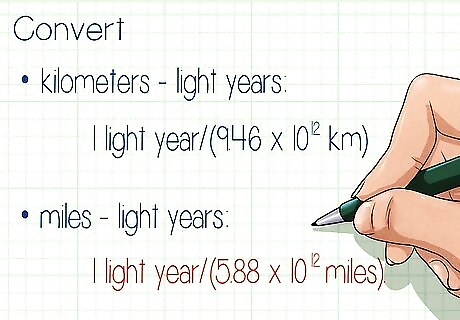
Determine the correct conversion factor. You need to identify the units for the distance that you’re converting to light years. If you’re converting from kilometers to light years, you will use a different conversion factor than if you’re converting from miles. To convert from kilometers to light years, you will use: 1 light year/(9.46 x 10 km). To convert from miles to light years, you will use: 1 light year/(5.88 x 10 miles).
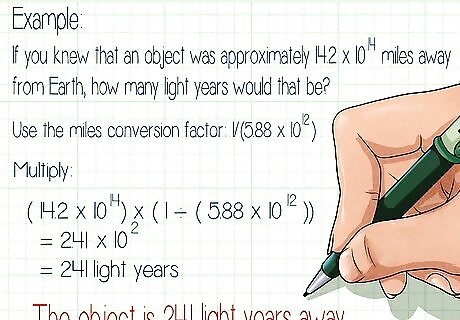
Multiply the original distance by the conversion factor. Once you have determined the proper conversion factor, you can multiply by the original distance to obtain the distance in light years. When numbers are large, it is best to use scientific notation. For example: If you knew that an object was approximately 14.2 x 10 miles away from Earth, how many light years would that be? Use the miles conversion factor: 1/(5.88 x 10) Multiply: (14.2 x 10) x (1/(5.88 x 10)) = 2.41 x 10 = 241 light years. The object is 241 light years away.

Find help. You can always ask for assistance from your teacher and fellow students. There are also many resources online and in your text book to help you when converting to light years. Don’t hesitate to ask for extra help if you need it. Remember, there are always multiple ways to get help when looking for an answer.

















Comments
0 comment